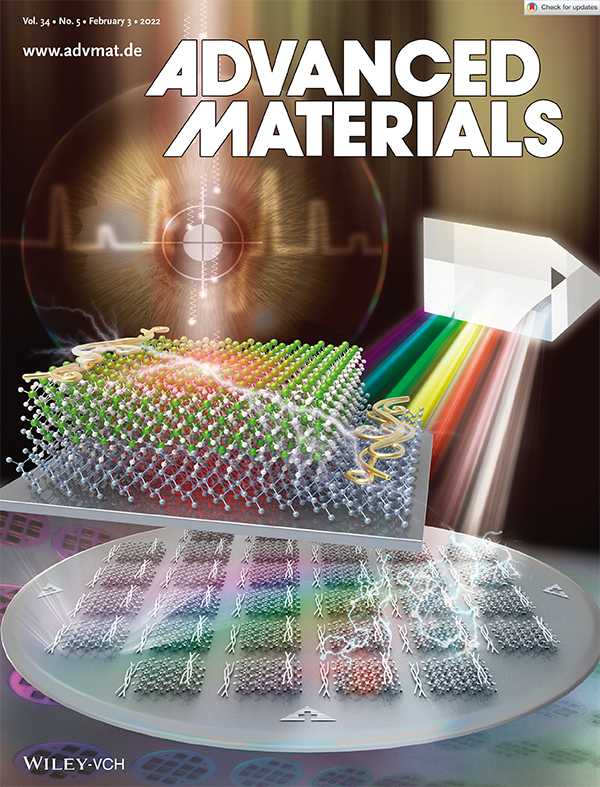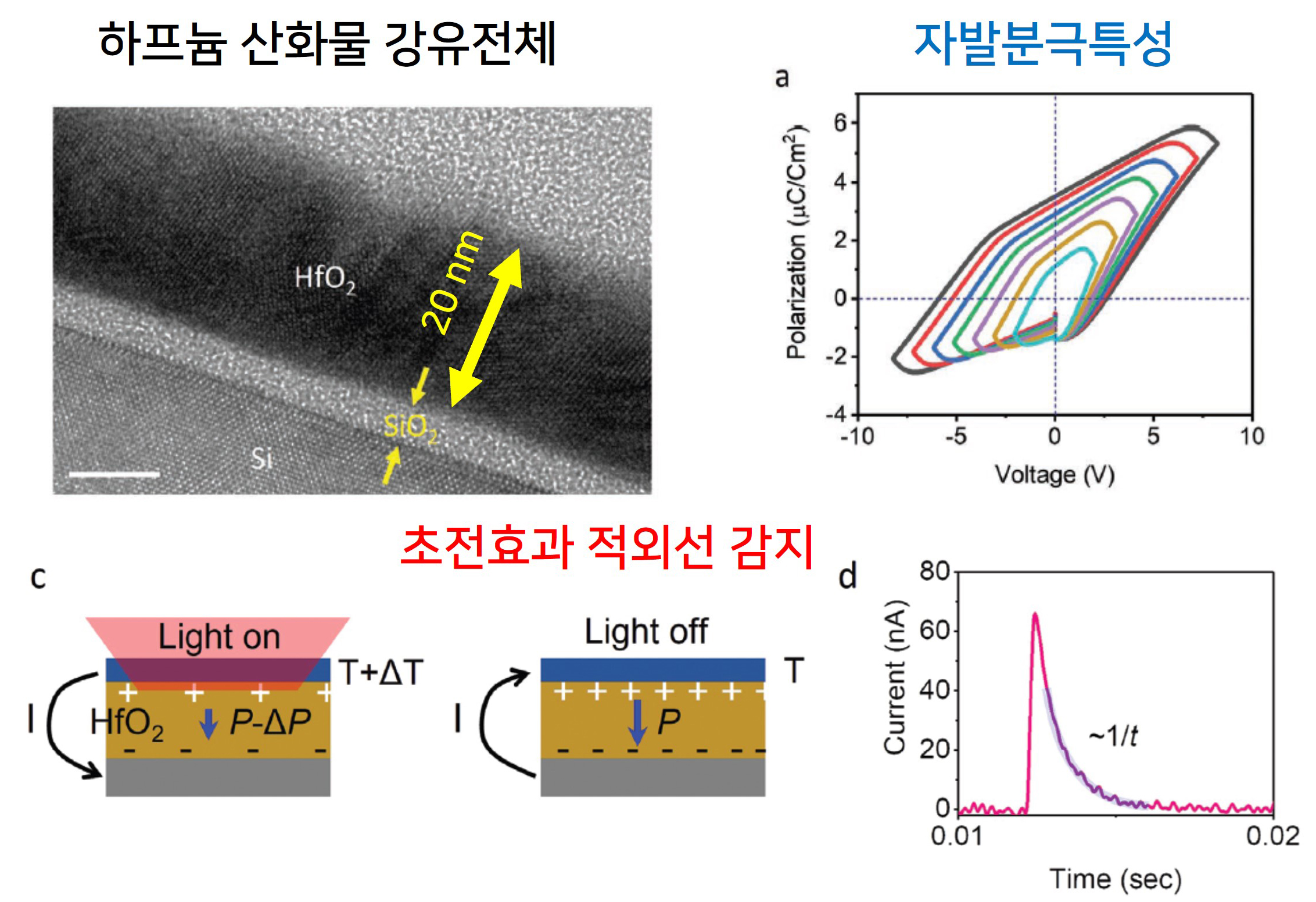[Feb 11, 2022] Prof. Hyungtak Seo’s Team Develops Ultrafast Optoelectronic Memory Using Fe-electric Pyroelectric Effect
- ESR Dept.
- 2022-02-11
- 8
 The cover of Advanced Materials
The cover of Advanced Materials
Ajou University’s Professor Hyungtak Seo and his research team have successfully developed an ultrafast optoelectronic memory device utilizing the ferroelectric pyroelectric effect. This breakthrough could be applied in a variety of fields requiring high-sensitivity and high-efficiency AI-enabled sensors, including autonomous vehicles, medical diagnostic devices, and optical communication components.
Professor Seo (Department of Materials Science and Engineering / Department of Energy Systems Research in Graduate School) reported that his team induced pyroelectric effects in ferroelectric ultrathin films to create hafnium oxide-based infrared optoelectronic memory devices with ultrafast, high-sensitivity, and self-powered performance.
The research, titled “High-Performing Self-Powered Photosensing and Reconfigurable Pyro-photoelectric Memory with Ferroelectric Hafnium Oxide,” was selected as a cover article in the February 3 issue of the international materials journal Advanced Materials (IF=30.849). Mohit Kumar, a graduate student in the Energy Systems Research Department at Ajou University, participated as the first author.
Infrared (IR) light has much higher transmittance than visible light, making it highly suitable for applications such as LiDAR systems for autonomous vehicle navigation. Accordingly, IoT optical sensors and optoelectronic memories using IR light are receiving increasing attention. Current IoT IR optical sensors are evolving into AI-enabled optoelectronic memory devices that integrate signal processing and memory functions, aiming to achieve high functionality at low power.
The operation of IR optical sensors varies by technology, and among these, the pyroelectric effect is commonly used in indoor intrusion detection sensors. The pyroelectric effect generates an electrical polarization in response to temperature changes in the material induced by incoming IR radiation. When polarization is induced in a material by external light or electrical stimulation, it is called spontaneous polarization, and materials with strong spontaneous polarization are required for IR detection.
 Research Achievements of Professor Hyung-Tak Seo’s Team Using Ferroelectric Hafnium Oxide
Research Achievements of Professor Hyung-Tak Seo’s Team Using Ferroelectric Hafnium Oxide
Professor Seo’s team focused on hafnium oxide (HfO₂), widely used in semiconductor materials. Hafnium oxide is a ferroelectric material with high spontaneous polarization under an electric field and is commonly applied in transistor gate insulators and ferroelectric memories. Although HfO₂ typically absorbs UV light and cannot directly absorb IR, optimizing the material for IR-induced spontaneous polarization and using ultrafast IR detection allowed the team to achieve high-sensitivity IR detection and multi-level optical signal storage.
Through theoretical calculations, the team determined the oxygen vacancy density that maximizes spontaneous polarization and used it to control defects in 10-nm-thick HfO₂ films deposited on a silicon substrate. Silver nanoelectrodes were added on top to optimize IR incidence and photocurrent detection.
As a result, the optimized HfO₂ exhibited both spontaneous polarization and ion-polarization effects from moving oxygen anions under an electric field, achieving a memory window of 10 V and 100 μA. The team also implemented a reconfigurable optical memory function capable of storing IR signals at multiple levels by adjusting the applied voltage.
Notably, the researchers drove the device in a self-powered mode using the photoelectric effect without external power by alternating IR exposure to generate AC photocurrent. The device achieved a detection speed of 60 microseconds (0.06 ms), and atomic microscopy confirmed that the same pyroelectric IR detection could be implemented at a 30-nanometer scale.
Professor Seo explained, “This work demonstrates ultrahigh-sensitivity IR detection and reconfigurable optical memory using silicon-hafnium oxide materials, widely employed in sensors and IC semiconductors, marking an important academic and technological achievement. This approach can enable high-speed, high-sensitivity IR devices integrated into existing silicon ICs and applied as low-cost, high-performance IoT sensors.”
This research was supported by the Ministry of Science and ICT and the Korea Research Foundation through the Mid-Career and Basic Research Support Program, and patent applications are currently underway.
